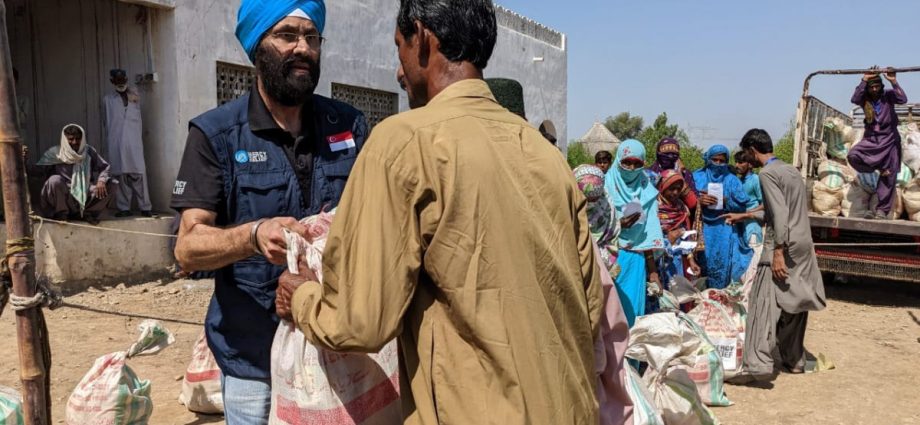
For many students, the floods have disrupted their education.
At a makeshift school set up under tarp sheets near Malook Khaskheli, schoolteachers said that about half of the batch of 63 students aged five to 12 are still attending classes, while the rest had moved away.
University student Wasseem Ali Khan, 21, was pursuing a bachelor’s degree in medical sciences at Makhdoom Mohammad Zaman Talib ul Moula Government Boys Degree College, New Saeedabad.
Two months ago, the college building was converted into temporary housing. Mr Ali Khan has not been able to attend classes since then. He is among 400 people from his village now sheltering on campus.
WOMEN’S HEALTH
Besides students’ education, the floods in Pakistan have also severely disrupted access to healthcare.
This is compounded by the spread of malaria and waterborne illnesses in the wake of the disaster, with the United Nations warning of a “second wave of death and destruction”.
On Wednesday, the Mercy Relief team visited a roving clinic serving about 80 women from three villages in Tando Allahyar district.
This is part of a medical camp for ante- and post-natal care organised by NRSP, which provides free consultations and medicine to pregnant women and new mothers.
The clinic will move on to serve different flood-affected villages over the coming days.
Gynaecologist Dr Maira Yaqoob, 27, said that most patients she sees are showing signs of pain, fever and weakness. Some also had symptoms of waterborne illnesses such as diarrhoea and skin infection.

